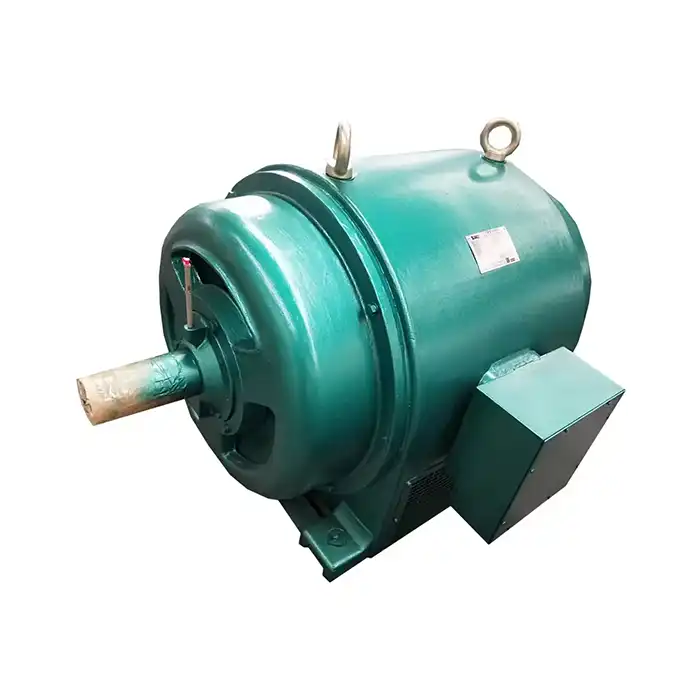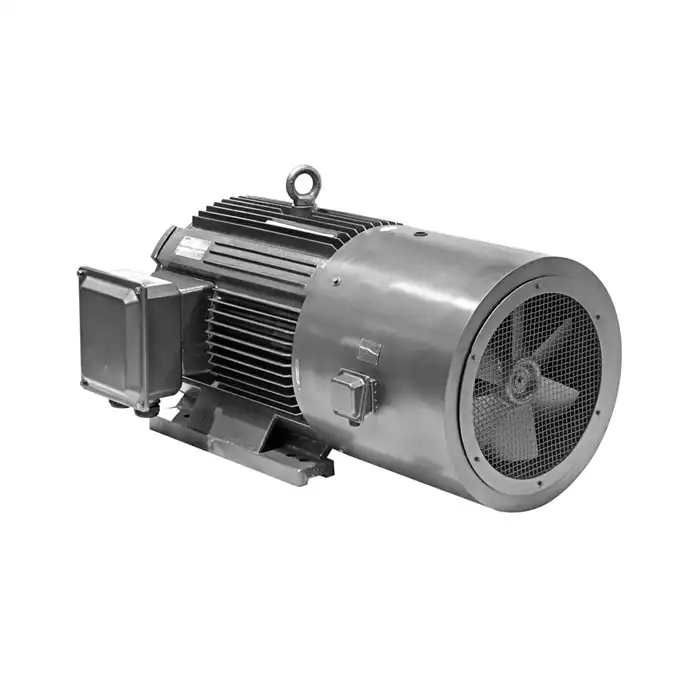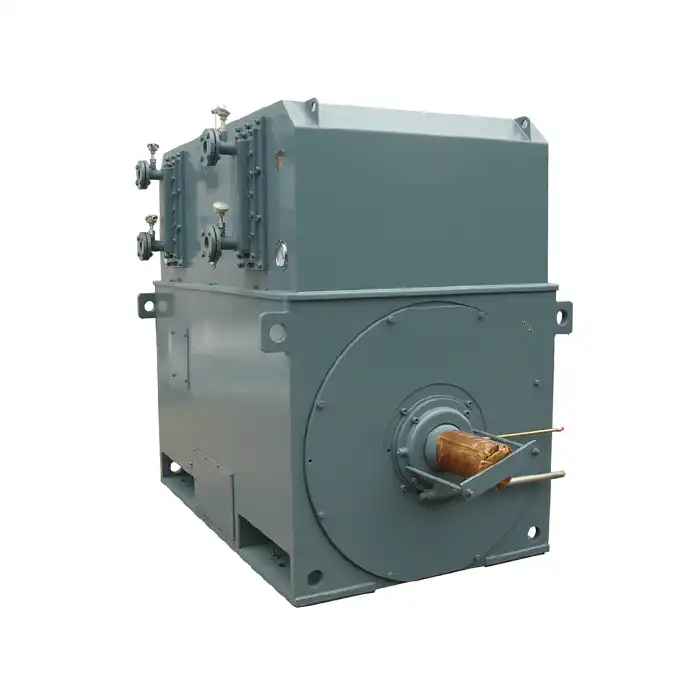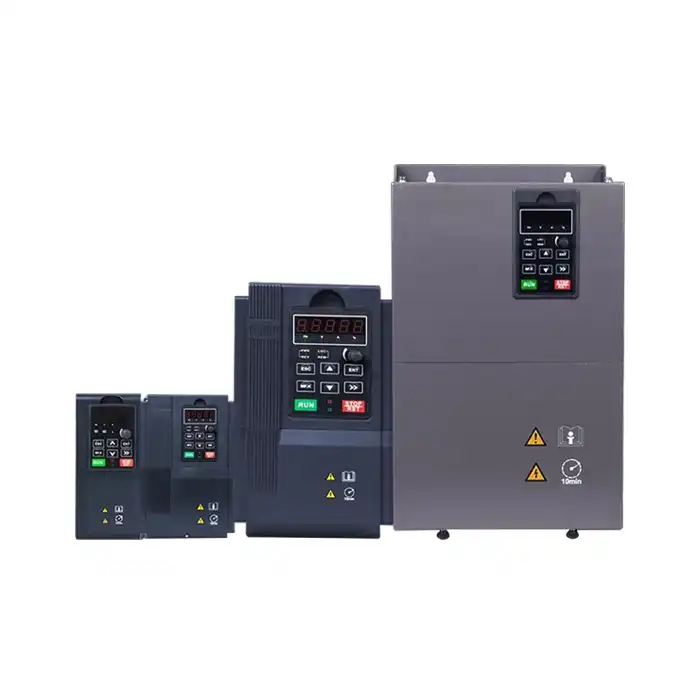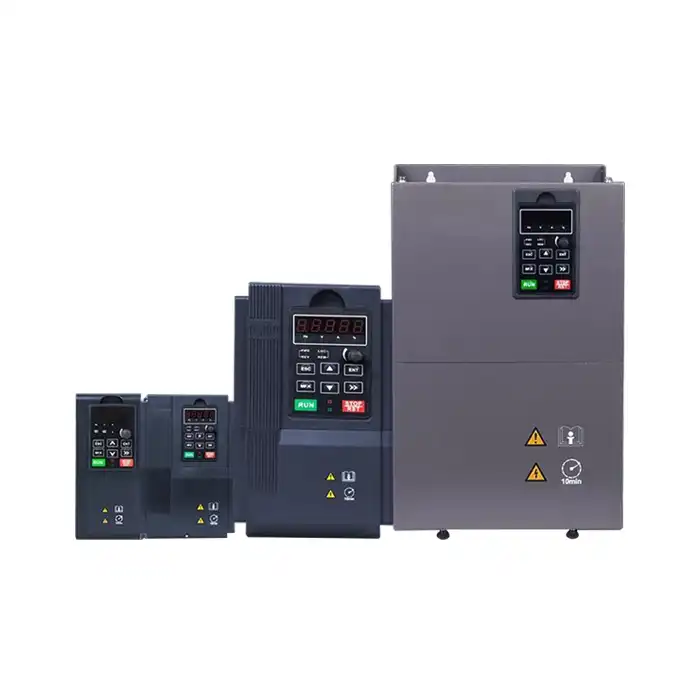Step-by-Step Installation Guide for 3 Phase Cage Induction Motors
Installing a 3 phase cage induction motor requires precision and attention to detail. This comprehensive guide will walk you through the essential steps to ensure a successful installation, focusing on proper alignment, electrical connections, and initial testing procedures. By following these guidelines, you'll maximize the performance and longevity of your 3 phase cage induction motor.

Proper Alignment Techniques to Prevent Vibration Issues
Correct alignment is crucial for the smooth operation of your motor. Misalignment can lead to increased vibration, premature bearing wear, and reduced efficiency. Here's how to achieve proper alignment:
- Foundation Preparation: Ensure the motor's foundation is level, rigid, and free from vibrations. Use a spirit level to check for any unevenness.
- Mounting: Securely bolt the motor to the foundation, using shims if necessary to achieve a level position.
- Coupling Alignment: If your motor is coupled to another piece of equipment, such as a pump or fan, precise alignment is critical. Use a laser alignment tool or dial indicators to check both angular and parallel alignment.
- Soft Foot Check: Verify that all motor feet are in firm contact with the mounting surface. A "soft foot" condition can cause misalignment and vibration.
- Thermal Growth Compensation: Consider the effects of thermal expansion during operation. Make allowances in your alignment to accommodate any changes in motor position due to heat.
- Vibration Analysis: After initial alignment, conduct a vibration analysis to identify any residual issues. This can be done using a handheld vibration meter or more advanced vibration analysis equipment.
Remember, even small misalignments can lead to significant problems over time. Take the time to ensure your 3 phase cage induction motor is perfectly aligned for optimal performance.
Electrical Connection Best Practices
Proper electrical connections are essential for the safe and efficient operation of your motor. Follow these best practices to ensure correct wiring and protection:
- Power Supply Verification: Confirm that your power supply matches the motor's voltage and frequency requirements. For our motors, the typical voltage range is 380V±5%, with a power range of 45-800kW.
- Wiring Diagram: Consult the motor's wiring diagram, usually found inside the terminal box or in the manufacturer's documentation. This diagram will show the correct connections for your specific motor configuration.
- Cable Selection: Use appropriately sized cables that can handle the motor's full load current. Consider factors such as ambient temperature and installation method when selecting cables.
- Grounding: Ensure proper grounding of the motor frame to prevent electrical hazards. Use a dedicated ground wire connected to the motor's grounding terminal.
- Terminal Connections: Make secure connections at the motor terminals, using the correct torque specifications to prevent loose connections that can lead to arcing or overheating.
- Insulation Resistance Test: Before energizing the motor, perform an insulation resistance test using a megohmmeter to verify the integrity of the motor's insulation.
- Overload Protection: Install appropriate overload protection devices, such as thermal overload relays or electronic motor protection relays, to safeguard against overheating and damage.
- Power Factor Correction: Consider installing power factor correction capacitors if required by your electrical utility or to improve overall system efficiency.
- Cable Routing: Route power cables away from sensitive control or instrumentation wiring to minimize electromagnetic interference.
- Conduit and Sealing: If using conduit, ensure proper sealing at the motor's conduit box to maintain the motor's IP23 protection rating.
By following these electrical connection best practices, you'll ensure safe operation and minimize the risk of electrical faults in your 3 phase cage induction motor.
Initial Testing Procedures Before Full Commissioning
Before fully commissioning your motor, it's essential to perform a series of initial tests to verify proper installation and function. These tests will help identify any potential issues before they can cause damage or downtime:
- Visual Inspection: Conduct a thorough visual inspection of the motor and its connections. Look for any signs of damage, loose components, or debris that may have entered the motor during installation.
- Rotation Check: Before coupling the motor to its load, briefly energize it to verify the correct direction of rotation. This is especially important for applications where reverse rotation could cause damage.
- No-Load Test: Run the motor without load for a short period, typically 15-30 minutes. Monitor for any unusual noises, vibrations, or temperature increases.
- Vibration Measurement: Use a vibration analyzer to measure vibration levels at key points on the motor. Compare these readings to the manufacturer's specifications or ISO standards for acceptable vibration levels.
- Current Measurement: Measure the current draw on each phase during the no-load test. These values should be balanced and within the motor's specifications.
- Temperature Monitoring: Use an infrared thermometer or thermal imaging camera to check for any hot spots on the motor casing or terminal box during the no-load test.
- Insulation Resistance Re-Check: After the no-load test, allow the motor to cool and re-check the insulation resistance. This will help identify any insulation weaknesses that may have been exacerbated by the initial run.
- Bearing Lubrication Check: Verify that bearings are properly lubricated according to the manufacturer's recommendations. Over-lubrication can be just as harmful as under-lubrication.
- Protection Device Testing: Test the functionality of all installed protection devices, including overload relays, temperature sensors, and vibration monitors if applicable.
- Load Testing: If possible, perform a load test at various operating points to verify the motor's performance across its intended operating range.
- Data Recording: Record all test results, including current readings, vibration levels, and temperature measurements. This data will serve as a baseline for future maintenance and troubleshooting.
These initial testing procedures are crucial for ensuring the reliability and longevity of your 3 phase cage induction motor. They allow you to identify and address any issues before they can escalate into more serious problems during regular operation.
Throughout the installation and testing process, it's important to maintain detailed records of all measurements, observations, and actions taken. This documentation will be invaluable for future maintenance and troubleshooting efforts.
When installing a 3 phase cage induction motor, always prioritize safety. Ensure that all personnel involved in the installation and testing are properly trained and equipped with appropriate personal protective equipment (PPE). Follow all relevant safety standards and regulations, including lockout/tagout procedures when working on electrical systems.
Remember that while this guide provides a comprehensive overview of the installation process, specific requirements may vary depending on your particular motor model and application. Always consult the manufacturer's documentation for detailed instructions tailored to your specific equipment.
By following these step-by-step guidelines for alignment, electrical connections, and initial testing, you'll set the foundation for reliable and efficient operation of your 3 phase cage induction motor. This attention to detail during installation will pay dividends in terms of reduced maintenance needs, improved energy efficiency, and extended motor life.
As you progress through the installation process, don't hesitate to seek expert advice if you encounter any challenges or uncertainties. Proper installation is a critical factor in achieving the full potential of your motor's performance and efficiency.
Conclusion
Installing a 3 phase cage induction motor is a complex process that requires careful attention to detail and adherence to best practices. By following the steps outlined in this guide, you can ensure that your motor is properly aligned, securely connected, and thoroughly tested before commissioning.
At Shaanxi Qihe Xicheng Electromechanical Equipment Co., Ltd., we understand the critical role that high-quality motors play in industrial automation, HVAC systems, energy production, and various other applications. Our commitment to providing energy-efficient, reliable power equipment extends beyond just manufacturing - we're here to support you throughout the entire lifecycle of your motor.
Whether you're in manufacturing, process control, power generation, or any other industry that relies on robust motor solutions, we have the expertise to meet your needs. Our range of 3 phase cage induction motors, with power outputs from 45kW to 800kW, are designed to deliver consistent performance in demanding environments.
Don't let motor installation challenges hinder your operations. If you need further guidance on motor selection, installation, or have any technical queries, our team of experts is ready to assist you. Contact us at xcmotors@163.com for personalized support and solutions tailored to your specific requirements. Let's work together to optimize your power systems and drive your business forward with reliable, efficient motor technology.
References
1. Johnson, M. (2022). "Advanced Techniques in Industrial Motor Installation". Industrial Engineering Press.
2. Smith, A. & Brown, B. (2023). "Electrical Connections for Three-Phase Motors: A Comprehensive Guide". IEEE Transactions on Industry Applications.
3. National Electrical Manufacturers Association. (2021). "NEMA Standards Publication MG 1-2021: Motors and Generators".
4. International Electrotechnical Commission. (2023). "IEC 60034-1:2023 Rotating electrical machines - Part 1: Rating and performance".
5. Thompson, R. (2022). "Vibration Analysis in Electric Motor Maintenance". Journal of Mechanical Engineering.
6. Davis, E. (2023). "Energy Efficiency in Industrial Motor Systems: Installation and Operation Best Practices". Energy Engineering Review.





